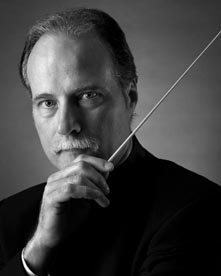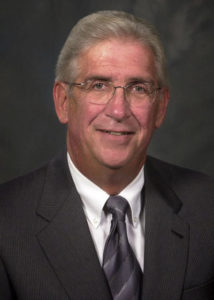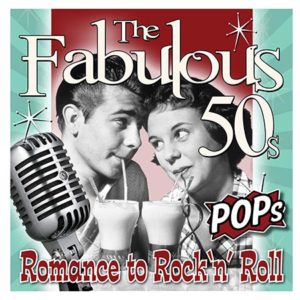Concert 3 January 5, 2019
“The Fabulous 50s–Romance to Rock ‘n’ Roll”

Rock Favorites by The New Buddy Holly Band (Starting 7:15)
Selections from Guys and Dolls–If I Were a Bell, Luck be a Lady Tonight, Sit Down You’re Rockin the Boat, Bushel & a Peck, I’ve Never Been in Love Before
Arr. Loesser/Custer
An American in Paris
George Gershwin
Theme from The Apartment
Charles Williams; Arr. Cacavas
The Ballad of Davy Crockett
Music by George Bruns; Lyrics by Thomas W. Blackburn
Alma Mater, The Typewriter, Belle of the Ball Waltz
Leroy Anderson
Theme from Exodus
Ernest Gold, Arr. Stuessy
<<<Joe Stuessy, Piano Soloist>>>
The Fabulous Fifties – Theme from Dragnet, Canadian Sunset, Bubbles in the Wine, Around the World in Eighty Days, Cherry Pink and Apple Blossom White, Tequila, Summer Place, and Peter Gunn
Medley Arr. Stuessy

Sponsored by Cecil Atkission Motors
Conductor’s Letter

Gene Dowdy
Conductor & Artistic Director
Dear Symphony of the Hills’ Friends,
Our annual pops concert will feature music from the 1950’s, a golden age for music in America. So many of our great classics, pops, showtunes, Broadway selections, movie scores, and even the emergence of Rock & Roll all catalyzed in the post war boom of what we nostalgically refer to now simply as “the 50’s.”
All in attendance will enjoy the incredible variety of symphonic works presented at this concert.
More information coming soon!
Gene Dowdy
Conductor & Artistic Director
Concert Notes
The Fabulous Fifties – from Romance to Rock and Roll
January 5, 2019
With Chris Huber as Buddy Holly
In sharp contrast to the preceding decades of the Great Depression, a horrifying war and other hardships, the decade of 1950 – 1959 was indeed fabulous. The uplifting and mostly joyous decade was marked by a peak in births during the Baby Boomer years, a natural response to an easier life with a robust economy and an abundance of options. People yearned to live a less stressful life and to raise a family.
To be sure, there were distressing and frightful issues in the fifties: the pervasive fear of nuclear war; the Korean War; the Cuban revolution; the witch-hunts by the House Un-American Activities Committee and conflict over school desegregation. Extraordinary developments included definition of the double-helix DNA model by Watson and Crick, the launch of Sputnik by the USSR, the interstate highway system, the first “I Love Lucy” show, and the opening of the first McDonald’s (with these last two developments certainly contributing to the decade’s fabulousness.)
One who lived his or her teenage years during the fifties would conclude that nothing more typified this wondrous decade than the music. Early in the period there was an upsurge of musical creativity popularly expressing interpersonal connection and love in the tangible form of 45 rpm records and ubiquitous radio broadcasts. (Television was not widely available.) This was a romantic period like no other, with vocalists such as Nat King Cole, Bing Crosby, Johnny Mathis, Peggy Lee, Patty Page, Frank Sinatra, Jo Stafford, Johnny Ray, Teresa Brewer, Perry Como, Joni James, Connie Francis and Patsy Cline; orchestras like Artie Shaw, Percy Faith, Les Brown, Ray Anthony, Louis Armstrong, Stan Kenton, Leroy Anderson and small ensembles such as The Four Lads, The Four Aces, The Mills Brothers, The Brothers Four, The Four Preps and the Kingston Trio, and these were just the most popular and well publicized. Many other vocalists and groups were popular for one song and then were never heard from again (of which a good example is “Bermuda” by the Bell Sisters in 1952.)
A musical genre unique to the decade was Doo-Wop, one of the most popular forms of 1950s rhythm and blues, often compared with rock and roll, with an emphasis on multi-part vocal harmonies and meaningless background lyrics (from which the genre got its name.) Enduring groups were few but several come to mind: The Coasters, The Platters, The Drifters, The Mystics, The Flamingos and The Belmonts.
The second half of the decade saw a marked transition from classic pop to rock and roll (rock ’n’ roll) plus the development of much better recording and playback equipment, termed “High Fidelity” or just “Hi-Fi.” These developments were followed later in the second half of the decade with a two-channel recording and amplifying means labeled Stereophonic Sound. Individuals were able to purchase (expensive) equipment for home playback to nearly reproduce the original sound.
This new “rock ‘n’ roll” music primarily appealed to the teen market; the teen demographic became a distinct entity for the first time in this period because the teens had money and would spend it. Artists with broad appeal in this period were most notably Bill Haley and His Comets, Sam Cooke, Fats Domino, Bo Diddly, Buddy Holly, Chuck Berry and of course Elvis Presley. The popularity of the music was spread by clever marketing, targeting the teenage market through popular radio programs; the music popularity was tracked through the Billboard Charts, the Jukebox charts or “The Disk Jockey Top Forty,” also a marketing ploy. To emphasize the importance of music in this period: in many households toward the end of the decade, the “stereo” was the most expensive piece of furniture in the house.
Tonight the Symphony of the Hills will draw from this diverse body of music, from romantic ballads to rock and roll favorites, to give us a taste of how really fabulous was this decade. We are very fortunate to have had the expert contribution to this evening’s concert by Dr. Joe Stuessy, who developed many of the Fabulous Fifties arrangements you will hear this evening. Joe has a remarkable interest and considerable expertise in the music of this era, especially in rock and roll. Dr. Stuessy is director of the Texas State University-San Marcos School of Music and has written books on this music genre. (Notes continued below)
 Joe Stuessy holds the Ph.D. and Master of Arts degrees from the Eastman School of Music. His undergraduate degree is from Southern Methodist University. Dr. Stuessy served as Professor and Director of the School of Music at Texas State University (2003-2007) and was named Professor Emeritus, and served as Professor and Director of the Division of Music at the University of Texas at San Antonio for 19 years.
Joe Stuessy holds the Ph.D. and Master of Arts degrees from the Eastman School of Music. His undergraduate degree is from Southern Methodist University. Dr. Stuessy served as Professor and Director of the School of Music at Texas State University (2003-2007) and was named Professor Emeritus, and served as Professor and Director of the Division of Music at the University of Texas at San Antonio for 19 years.
Dr. Stuessy’s Piano Concerto No. 1 was premiered by the Houston Symphony Orchestra and has been performed by the San Antonio Symphony and the Moscow State Orchestra. His Piano Concerto No. 2 was premiered in 1996. Both concertos have been recorded by the Moscow State Orchestra and are available on Aquarius compact discs. Other works by Dr. Stuessy have been performed by the Dallas Symphony, the Eastman-Rochester Symphony, the Bolshoi Symphony (Moscow), Voices of Change, jazz trumpeter Clark Terry, and various other soloists and ensembles. A complete concert of his compositions was presented in 1993 at the Composer’s Union in Moscow, Russia. In 2005, he was named “Composer of the Year” by the National Federation of Music Clubs.
As a pianist, Dr. Stuessy has been featured as a concerto soloist with the Houston Symphony, the San Antonio Symphony, the Dallas Symphony, the Houston Youth Symphony, and the Houston All-City Symphony. He was also one of the pianists on “Monster Concert,” a Columbia recording.
In 1985, Dr. Stuessy provided invited testimony to the U.S. Senate Commerce Committee on the topic of rock and roll lyrics. He has taught a course on the history of rock music to over 10,000 students at three major universities (SMU, UTSA, and Texas State). In 1990, his book, Rock and Roll: Its History and Stylistic Development, was published by Prentice Hall. It is now in its 8th edition.
To end on a sour note: On 3 February 1959, a chartered plane transporting the three phenomenally popular rock ‘n’ roll musicians Buddy Holly, Ritchie Valens and J. P. “The Big Bopper” Richardson crashed in foggy conditions near Clear Lake, Iowa, killing all occupants on board, including the pilot Roger Peterson. The tragedy, coupled with Elvis joining the US Army, was later termed “The Day the Music Died”, an event commemorated in Don McLean’s 1972 song “American Pie”. Similarly tragic was the early death of Patsy Cline, also killed in a plane crash. One is only left to imagine how much more these young artists would have contributed; their music is still popular today as will be confirmed in the concert this evening.
Concert Notes by Jim Adams



